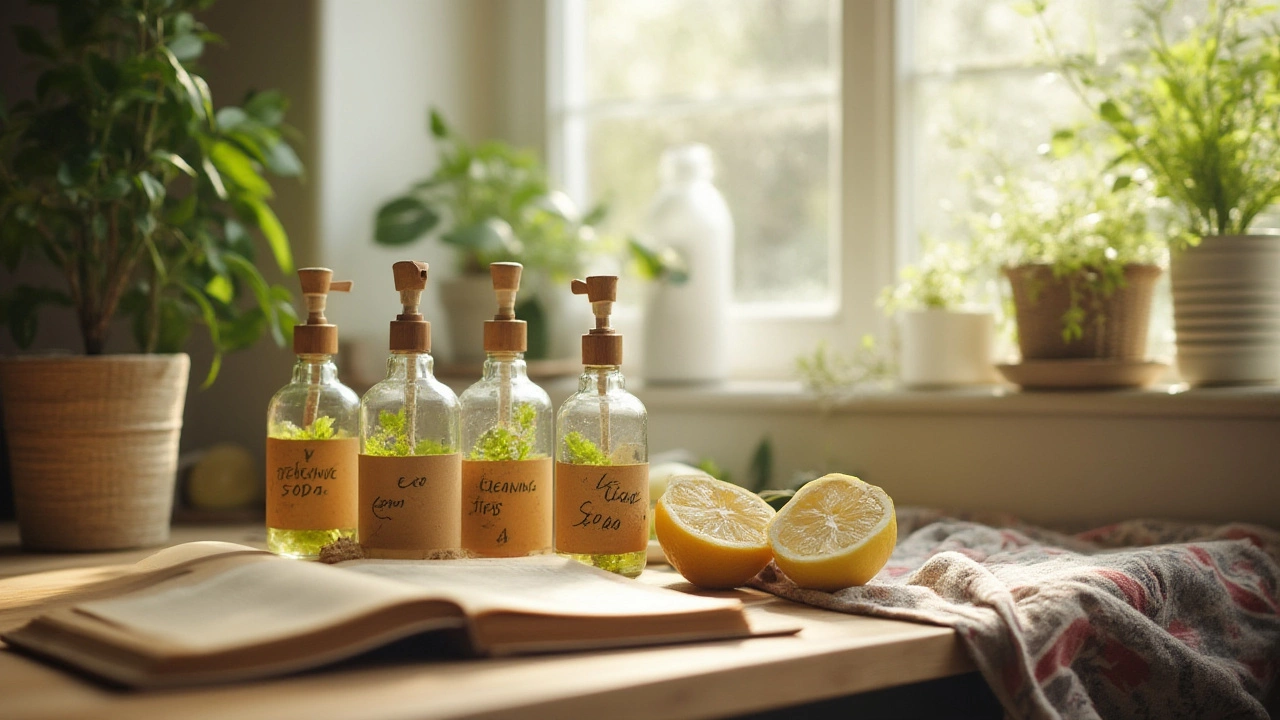Eco‑Friendly Cleaners: Simple, Safe, and Effective Cleaning for Every Home
Going green with your cleaning routine doesn’t mean you have to sacrifice power. You can get sparkling surfaces, fresh rooms, and peace of mind by using cleaners that are kind to the planet and safe for your family.
Why Choose an Eco‑Friendly Cleaner?
Traditional chemicals can trigger allergies, irritate skin, and linger in the air long after you’ve finished cleaning. Green cleaners use natural ingredients like vinegar, citrus oils, and plant‑based surfactants that break down quickly, leaving no harmful residue. Besides protecting health, they reduce water pollution and cut down on plastic waste when you pick refillable options.
Top Green Cleaning Picks for Common Jobs
1. All‑Purpose Sprays: Look for products labeled “biodegradable” and “phosphate‑free.” A mix of water, a splash of white vinegar, and a few drops of lemon essential oil works just as well for countertops, tiles, and appliances.
2. Glass & Window Cleaner: Instead of ammonia‑based sprays, try a solution of one part vinegar to two parts water with a microfiber cloth. It leaves windows streak‑free and doesn’t harm the planet.
3. Bathroom Cleaner: Baking soda paired with castile soap tackles soap scum and limescale without harsh acids. Sprinkle baking soda on the surface, spray the soap solution, scrub, and rinse.
4. Floor Cleaner: For tile or laminate, dilute a few drops of plant‑based dish soap in warm water. For wood floors, use a tiny amount of olive‑oil‑based cleaner to avoid damage.
5. Upholstery & Carpet Spot Cleaner: Mix one tablespoon of hydrogen peroxide, one tablespoon of dish soap, and two teaspoons of baking soda. Apply to stains, let sit, then blot with a clean cloth.
When you buy ready‑made green cleaners, check the label for certifications like “EU Ecolabel” or “US EPA Safer Choice.” These symbols guarantee the product meets strict environmental standards.
DIY mixes are great for saving money, but they need proper storage. Keep vinegar‑based solutions in a spray bottle away from direct sunlight to prevent degradation. Add a small amount of rubbing alcohol if you want a faster‑drying formula for mirrors.
Another tip: refill stations at supermarkets let you reuse your own bottle, cutting down on single‑use plastic. Bring a clean, empty spray bottle, fill it with the product you need, and you’re done.
Switching to eco‑friendly cleaners also means you can say goodbye to the strong chemical smell that makes many people feel sick. Natural scents like lavender, citrus, or tea tree oil keep the house smelling fresh while providing mild antimicrobial benefits.
Finally, remember that the best cleaner for any job is the one you’ll actually use. If a product feels too weak, combine it with a little extra vinegar or a pinch of baking soda to boost its power. Test on a hidden spot first, then enjoy a spotless home that’s safe for kids, pets, and the planet.
Ready to make the change? Start with one room, pick a green cleaner, and notice the difference. Your home will look great, and you’ll feel good knowing you’re doing your part for a cleaner world.

What Makes a Cleaner Truly Environmentally Friendly? Key Ingredients and Real-World Impact
Discover what defines an environmentally friendly cleaner, why ingredients matter, and how to select green cleaning products. Practical tips, facts, and science explained.
Read More